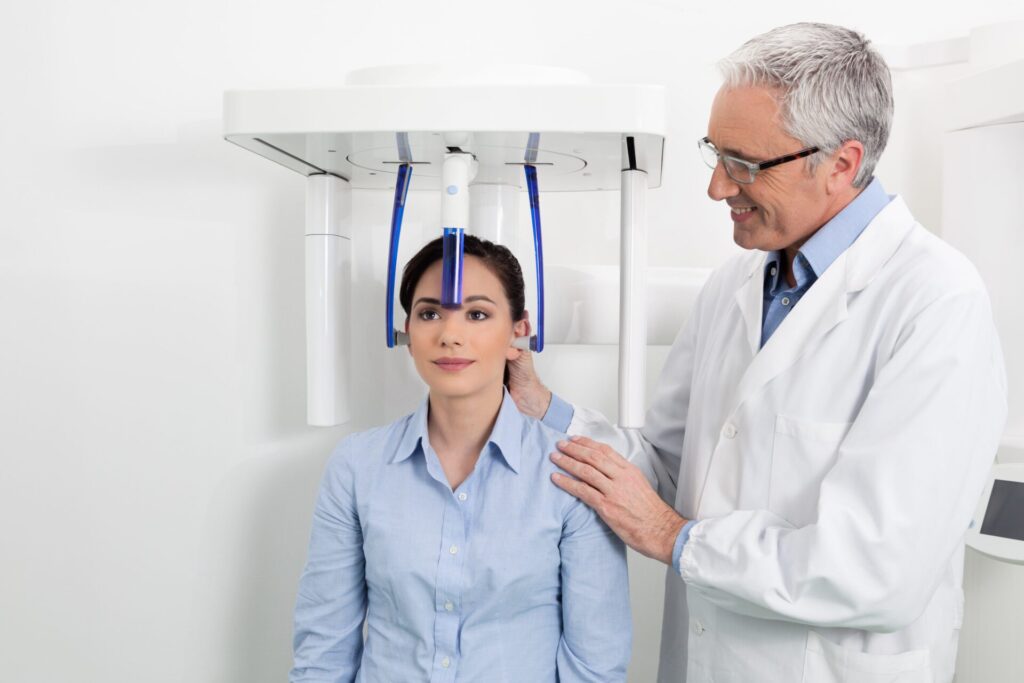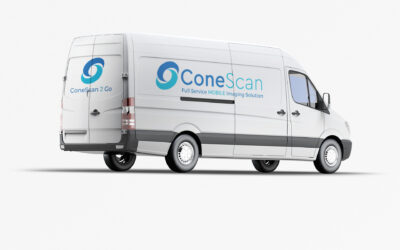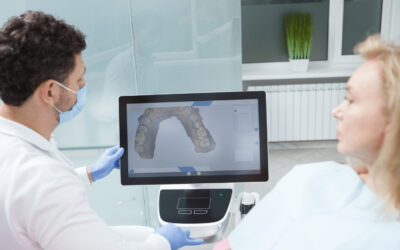
CBCT (cone-beam computed tomography) is a type of medical imaging that produces detailed 3D images of the teeth, jaws, and surrounding structures. It is commonly used in dentistry to help diagnose and plan treatments for dental and oral health conditions.
CBCT scanning can be a valuable tool for dental patients to help them understand their dental and oral health conditions and to make informed decisions about their treatment options. On this page, we’ll look at what the advantages of CBCT are, whether there are any drawbacks, and what the benefits of these dental scans are.
The importance of CBCT in dentistry:
Some key CBCT scan benefits include:
- It can provide more detailed and accurate images than traditional 2D X-rays, allowing for more precise diagnosis and treatment planning.
- It can help identify conditions that may not be visible on traditional X-rays, such as impacted teeth, cysts, and tumors.
- It can help dentists and oral surgeons plan complex procedures, such as dental implants, root canals, and jaw surgery, with greater accuracy.
- It can be used to create virtual models of the teeth and jaws, which can be used to design custom treatment plans and to make dental restorations, such as crowns and bridges or full arch restoration, and help with the placement of dental implants.
These are just some of the reasons why CBCT is important in dentistry.
What can a CBCT scan detect?
One of the biggest benefits of CBCT scans is the wide range of conditions they can be used to detect, including…
- Impacted teeth
- Cysts
- Tumors
- Dental trauma
- Dental infections
- Dental abnormalities
- Temporomandibular joint (TMJ) disorders
- Orthodontic treatment planning
How CBCT scanning can impact your dental procedures
The data obtained from a CBCT scan can be invaluable for dentists and oral surgeons.
- Implant evaluation: CBCT scans can provide detailed 3D images of the teeth, jaws, and surrounding structures, which can be used to evaluate the suitability of a patient for dental implants. The scans can help dentists assess the density and quality of the jawbone, the presence of any underlying abnormalities or infections, and the proximity of critical structures, such as nerves and blood vessels.
- Identifying critical structures: CBCT scans can help dentists identify critical structures in the mouth and jaws, such as nerves and blood vessels, that may be at risk during surgery. This can help dentists plan the safest and most effective surgical approach.
- Height and width of bone for safe surgery: CBCT scans can provide detailed information about the height and width of the jawbone, which can be used to plan safe and effective surgical procedures, such as extractions or dental implant placement.
- In addition, CBCT scans can be used to create detailed 3D models of the teeth and jaws, which can be used to plan orthodontic treatments or dental implants.
Advantages and disadvantages of CBCT in dentistry
As we’ve seen, there are many benefits of CBCT scans for both patients and dentists. These include providing detailed 3D images for more precise diagnosis and treatment planning, helping to identify conditions not visible on traditional X-rays, being able to create virtual models for custom treatment plans and restorations, and being a valuable tool for orthodontic treatment planning.
However, there are some disadvantages of CBCT scans too:
- CBCT scans can be more expensive than traditional 2D X-rays.
- They may take longer to perform than traditional X-rays.
- They do expose patients to low levels of radiation.
- They may not be available at all dental offices, and patients may need to travel to a specialized facility to have the scan performed.
Benefits of CBCT scans for patients
There are several potential benefits of CBCT scans for dental patients:
- Improved appearance: By providing detailed 3D images of the teeth and jaws, CBCT scans can help dentists identify and correct any underlying issues that may be affecting the appearance of the teeth and smile.
- Safety: CBCT scans can help dentists identify and plan for potential risks or complications during dental procedures.
- Financial: While CBCT scans may be more expensive than traditional X-rays, they can also help dentists identify and treat dental and oral health conditions earlier, which may save patients money in the long run by preventing the need for more extensive or costly treatments in the future.
- Improved treatment planning: By providing detailed 3D images of the teeth and jaws, CBCT scans can help dentists design more accurate and customized treatment plans, resulting in better outcomes for patients.
You can learn more about CBCT scanning here, or feel free to reach out if you have any questions!


